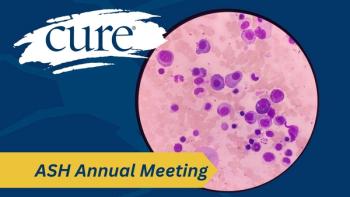
Acupuncture Reduces AI-Associated Joint Pain in Women with Breast Cancer
To address compliance issues associated with treatment using aromatase inhibitors, researchers show that acupuncture effectively eases joint pain, a side effect from hormone therapy.
A mix of traditional and customized acupuncture techniques proved effective in reducing pain and stiffness associated with aromatase inhibitor (AI) therapy in women with early-stage breast cancer, according to data from a randomized phase III trial presented at the 2017 San Antonio Breast Cancer Symposium (SABCS).
Investigators said a 12-week intervention program demonstrated the value of the therapy to help relieve symptoms that may cause patients to skip or stop treatments. “We have heard throughout this conference about the efficacy of AIs for women with hormone-sensitive breast cancer. It works both in the adjuvant setting in women with metastatic disease, and for the prevention of breast cancer.” said Dawn L. Hershman, MD, MS, leader of the Breast Cancer Program at the Herbert Irving Comprehensive Cancer Center at NewYork-Presbyterian Columbia University Medical Center.
“But we also know that it doesn’t work if you don’t take it, and noncompliance is a major problem amongst women taking hormonal therapy,” Hershman said in discussing the research team’s findings during an SABCS press briefing.
Hershman acknowledged that noncompliance can be multifactorial, but one of the main reasons patients discontinue treatment is because of adverse effects and, in particular, joint pain and stiffness. “[Therefore,] we were interested in a nonpharmacologic modality for assessing whether or not we could control these symptoms.”
Small studies have suggested acupuncture may be beneficial in treating AI-associated arthralgia; however, these findings are not consistent across all trials. To test this theory across multiple measures, the researchers conducted the multicenter, randomized phase III trial designed to evaluate the efficacy of acupuncture in reducing AI-related joint symptoms over a 24-week period.
Patients reported their pain before, during, and after acupuncture or no treatment using the Brief Pain Inventory (BPI)-Short Form, a self-administered questionnaire of 14 items, to evaluate the severity of pain on a scale of 0 to 10, with higher scores indicating more pain and an increased impact on daily functioning.
To be eligible, women were required to have hormone receptor-positive, stage I to III breast cancer; be taking a third-generation AI for at least 30 days; report a score of 3 or more of BPI worst pain; have symptoms that started or progressed since starting AI therapy; have received no opioids, corticosteroids, or alternative/physical therapy for joint pain for 28 days prior to registration; and have had no prior acupuncture treatment for AI-associated joint pain.
Researchers randomized 226 patients 2:1:1 to the following treatment arms:
- True acupuncture: standard traditional Chinese medicine point prescription, a 30- to 45-minute session including a full body, auricular, and joint-specific acupuncture protocol tailored to the most painful joints (n = 110)
- Sham acupuncture: shallow needle insertion with thin, short needles at 4 standardized non-acupuncture points (n = 59)
- Waitlist control: patients were under the impression they would receive true acupuncture following the 24-week trial (n = 57).
Improved joint pain score after 6 weeks served as the primary endpoint. The researchers also evaluated maintenance acupuncture efficacy from weeks 6 through 12, followed by an additional 12-week follow-up. True acupuncture and sham treatments included twice-weekly sessions for 6 weeks followed by 1 session per week for 6 more weeks.
Patients were a median 60.7 years of age, and had been receiving AI therapy for a median of 1.1 years. Forty-four women previously received acupuncture therapy for other conditions (19 percent). At baseline, women reported BPI worst pain scores of 6.84, 6.55, and 6.48 in the true, sham, and waitlist arms, respectively.
After 6 weeks of treatment, mean BPI worst pain scores were 0.92 points lower in the true acupuncture arm compared with the sham arm, and 0.96 points lower than the waitlist control arm.
Additionally, the true acupuncture arm demonstrated a greater proportion of patients reporting clinically meaningful reductions in BPI worst pain of 2 points or more (58 percent), compared with the sham (31 percent) and waitlist arms (30 percent). According to a linear mixed model, these data remained statistically significant at 24 weeks.
The true acupuncture arm also outperformed the sham and waitlist arms in additional 6-week endpoints, including more favorable BPI scores for average pain, pain interference, pain severity, and worse stiffness. Similarly, these results were maintained after 24 weeks according to a linear mixed model.
“We have shown consistently, with multiple measures assessing pain and stiffness, that true acupuncture generated better outcomes than either control group in a large multicenter randomized controlled trial,” Hershman said. “And transitioning from twice-a-week to once-a-week acupuncture maintained the effect of the intervention.”
Grade 1 bruising appeared to be the only significant adverse event reported among true (47 percent) and sham acupuncture patients (25 percent).
“Acupuncture provides a nonpharmacologic option that can improve symptoms and possibly increase AI adherence as well as subsequent breast cancer outcomes,” Hershman said. “For patients who are reluctant to take a prescription medication that can result in other side effects, acupuncture provides a safe and effective alternative. Identification of nonopioid options for pain control is a public health priority.”
Hershman also noted the added benefits derived from the cost of the 12-week, 18-session intervention, which amounted to approximately $1,250 ($65-$75 per session).
“We feel there is now sufficient evidence to support insurance coverage of acupuncture for AI arthralgia, “she said.





